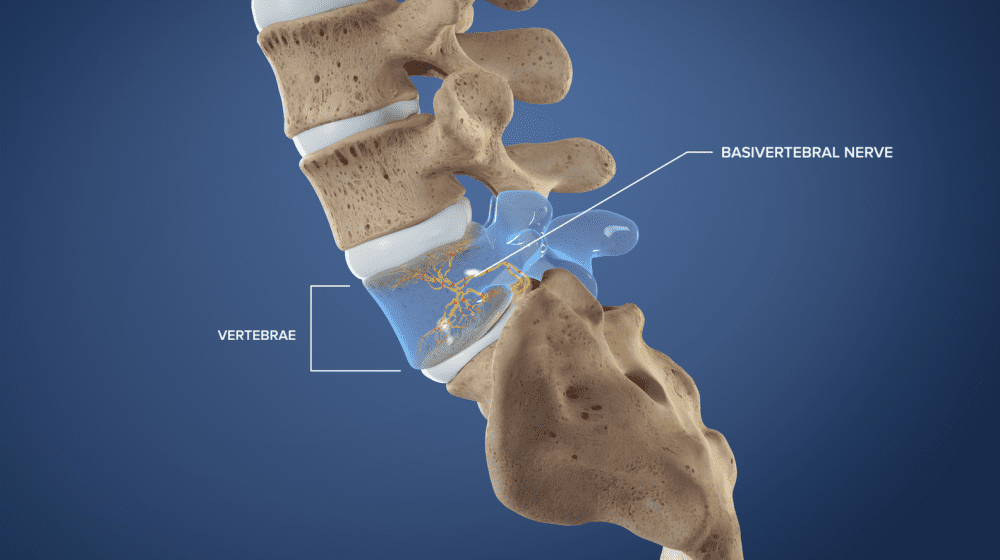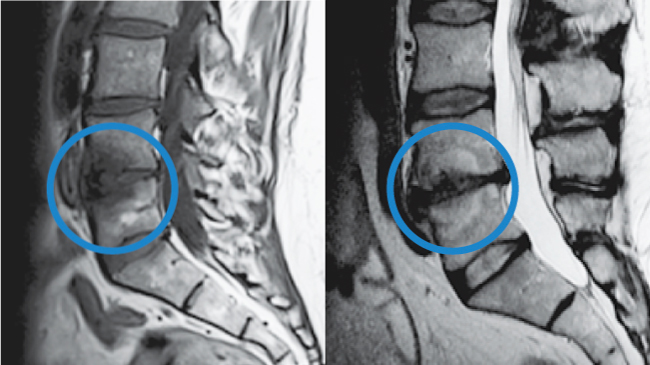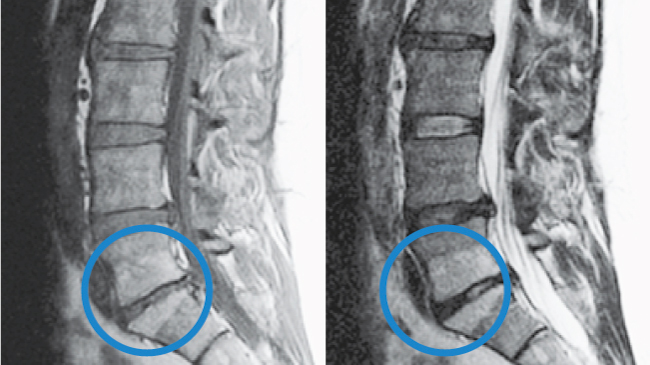
What is the Intracept Procedure?
The Intracept Procedure is a minimally invasive, outpatient procedure for patients with vertebrogenic low back pain. The procedure involves ablating a specific nerve within the vertebra called the basivertebral nerve and has been shown to improve function and relieve pain long-term.
How much relief does the Intracept Procedure provide and for how long?
Multiple studies have shown great pain relief as a result of the Intracept Procedure. In a randomized controlled Trial (RCT) five years after having the Intracept procedure, 66% of patients reported 50% or greater improvement in pain, 47% of patients reported 75% or greater improvement in pain and one third of patients reported that they were pain free.
How often does the Intracept Procedure need to be repeated?
It is anticipated that patients will never need to repeat the Intracept Procedure.
Who is a candidate for Intracept?
Someone who has had chronic low back pain for longer than six months, has not responded to physical therapy during that time, and has signs and symptoms of vertebrogenic pain including Modic changes.
What is considered chronic low back pain?
Back pain that continues for longer than 12 weeks.
Are there different types of low back pain?
Yes! Low back pain can be caused by multiple different disorders affecting joints, discs, muscles, or nerves.
What is vertebrogenic low back pain?
Low back pain that is caused by inflammation of the basivertebral nerve inside the vertebral body. This is usually the result of proinflammatory mediators from discs leaking into the bone through defects in the endplates (top or bottom of the vertebral body).

What are Modic changes?
Modic changes are bone marrow lesions seen within a vertebral body on magnetic resonance imaging (MRI) caused by chronic endplate inflammation.

Modic Type 1: Normal bone contains trabeculae, or internal scaffolding. In the spaces between the trabeculae there is red bone marrow, which produces blood cells. In Modic Type 1 changes, you see: Vascular development in the vertebral body; Findings of inflammation and edema; NO trabecular damage or marrow changes

Modic Type 2: Normal bone contains trabeculae, or internal scaffolding. In the spaces between the trabeculae there is red bone marrow, which produces blood cells. In Modic Type 2 changes, you see: Changes in bone marrow; Fatty replacement of formally red cellular marrow; Marrow is substituted with visceral fat; Same fat located on hips and bellies.
How do I know if I have Modic changes?
Modic changes are seen on magnetic resonance imaging (MRI). Talk to your physician about ordering or reviewing your MRI to assess for Modic changes.
Will my insurance cover Intracept?
Most insurance providers cover the Intracept Procedure. However, it may take several weeks to months for them to give approval. Some insurance companies may require you to undergo other interventional pain procedures prior to approval.
Is the Intracept procedure painful?
There is minimal pain for a few days after the Intracept Procedure. Most patients are able to manage this pain with over the counter medications (i.e. Tylenol or ibuprofen) as well as ice and heat.
How soon after the procedure will I notice results?
Most patients note improvement within the first two weeks after the procedure. However, it can take up to three months to receive the maximum benefit.
Where is the Intracept Procedure done?
Typically, the procedure is performed in an operating room under anesthesia for patient comfort.
Do you have to stay in the hospital overnight after the procedure?
No. This is an outpatient procedure. Patients will go home the same day.
What are the potential risks of the procedure?
Clinical studies have shown that there is minimal risk associated with the Intracept Procedure. The potential risks are similar to other procedures in the spine including, but not limited to, bleeding, infection, increase in back pain, new leg pain, and fracture of the pedicle or vertebral body.
Who should I see about being evaluated for the Intracept Procedure?
Dr. Jeremy Joyal and Dr. Brady Webb are among the few physicians in the state of Utah who perform the Intracept Procedure. Call Advanced Spine and Pain today to schedule a visit to see if you are a candidate for Intracept.
Visit Relievant.com for more information about the Intracept Procedure.
